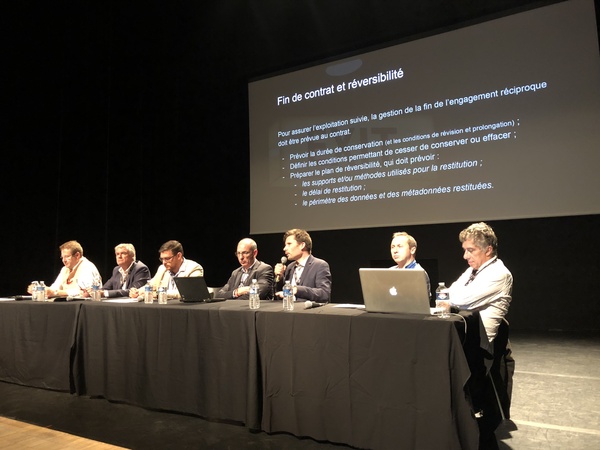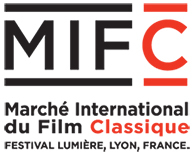Technical roundtable: Digital conservation and heritage

Around Wednesday afternoon's roundtable, hosted by Patrice Carré from Le Film Français, Laurent Cormier, Head of Film Heritage Management at the CNC, Olivier Duval, Deputy General Manager at Hiventy, Yves Gringuillard VP Digital Distribution & Preservation at Eclair, Christophe Massie, President Delegate Business and Market Observatory at the Ficam, Hans-Nikolas Locher, Director of Development at the CST, and Pierre-Loïc Précausta, CEO of Lumières Numériques.
Together, they came back to the technical support that follows the signature, the 3rd of October 2016, of the professional agreement on the followed exploitation of movies. Due to the upheavals caused by the switchover to digital, the uses of conservation and storage of films had to be modified. And if some bad practices persist, a recommendation called CST-RT-043: 2017, published in March 2018 following the reflections of a working group led by CST and FICAM, is meant to correct them. You can find the details by clicking here. Hans-Nikolas Locher, using a powerpoint, took advantage of this round table to give the outline.
As Laurent Cormier said, this regulation will now be part of the approval for the production of a film. In addition to the technical aspect, this recommendation emphasizes the need for a contractual framework explicitly defining the mutual obligations of the parties with regard to the application, responsibilities and guarantees for the preservation and storage of films. It also emphasizes "the choice of the digital elements of the work to be preserved and the quality of the master files in the perspective of the followed exploitation" but also on the format of the archived files to avoid all forms of obsolescence. This also points to the need for regular migration of the media in order not to be unable to read these files, and consequently to lose them, and the CST insisted on the replication of the data with "a minimum two replicas in two different locations and operationally independent "to avoid any permanent loss. Similarly, "reversibility", especially at the end of the contract, is important data to take into account, especially in the event of failure of the storage provider.
More generally, it is clear to all members of the panel that, for the moment, no digital support represents a guarantee in terms of sustainability. The solutions are numerous but only the « shoot », aka coming back to a celluloid form, allows a stability higher than 50 years but it implies an additional cost, which can be included from the beginning in the budget of the film thanks to the place of conservation in the approval. Is a long-term solution feasible in the near future? "A lot of exciting R & D efforts are underway but the time for their eventual industrialization is still unforeseeable". So for the moment "the inert support that everyone dreams about », as Hans-Nikolas Locher would say, is not yet at hand.
Finally, Laurent Cormier quickly returned to the balance sheet of the restoration and digitization of heritage films. For an amount of 60 million euros, 980 short and feature films were supported by the CNC. But if the device provides for a relaxation of the rules and intends to perpetrate itself, its real stake at present is budgetary, the finances of Center being "very constrained".



